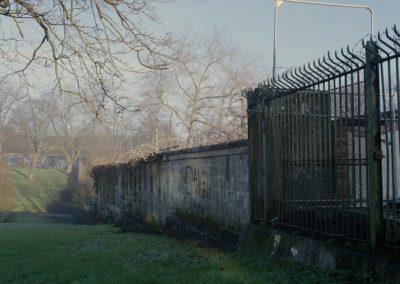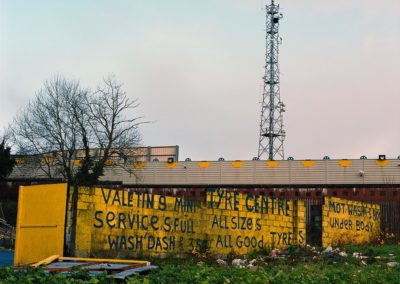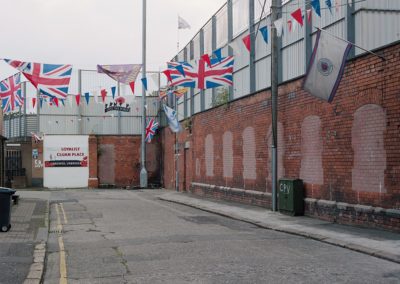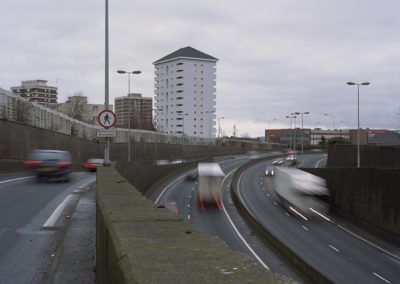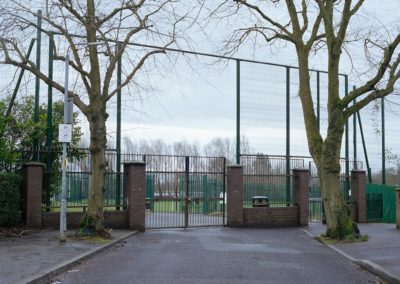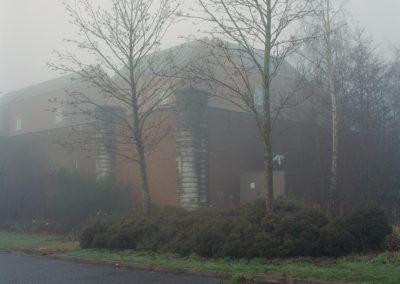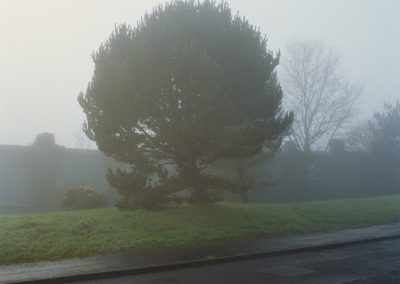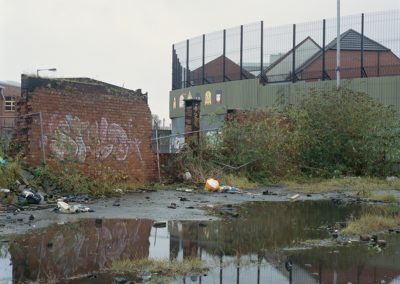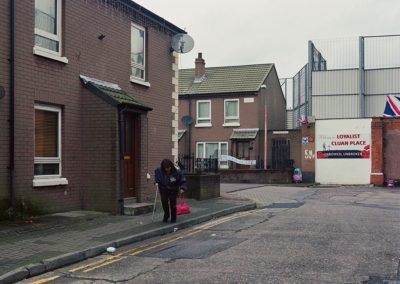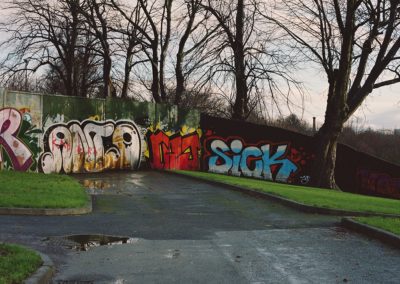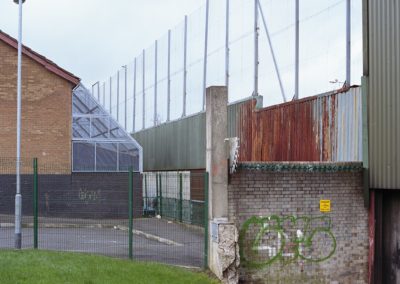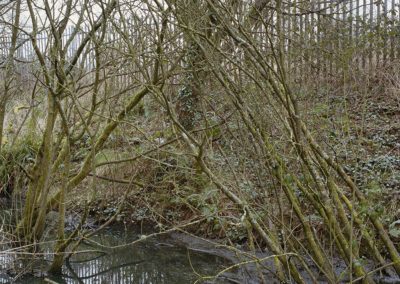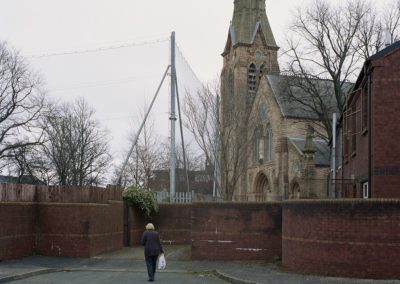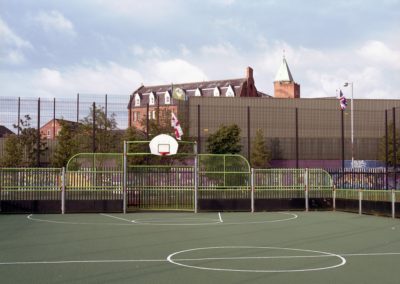‘Partition’ is my photographic document of the many miles of peace lines in Northern Ireland. Peace lines are physical, man-made constructions used to separate communities and to prevent localised conflict. This largely applies to those communities containing Protestants and Catholics.
The majority of these peace walls, or peace lines exist in Belfast, where they are over 20 km long. They can range from only 10 metres in length to over 3 miles. They can also be found in the city of Londonderry and the towns of Portadown and Craigavon. The focus for my project is the capital city Belfast.
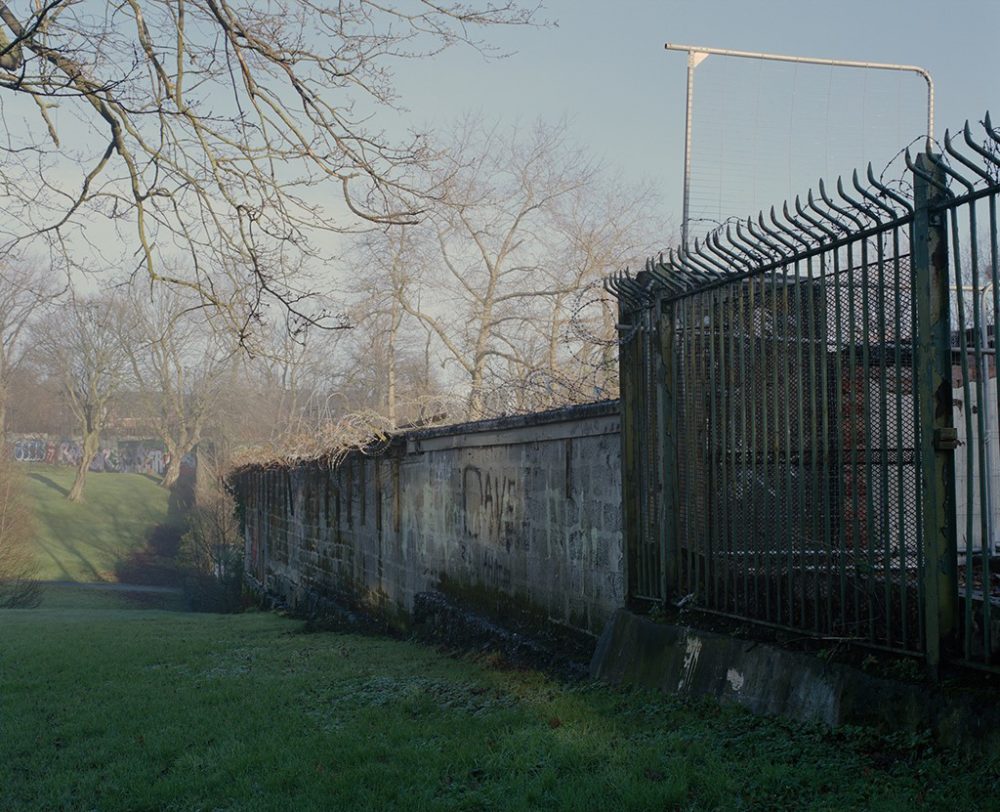
The Troubles started in 1969 during which approximately 50,000 people were killed or injured. In 1971 the first structures were erected. The conflict continued for approximately 30 years, with the after-effects still being felt and harboured today.
The peace lines themselves were initially seen as a temporary measure to reduce harm and to aid policing. However, as you can see from the photographs, they are still very much within the geography today. During their implementation placement of roads and police stations were often used as lines themselves and to act as a more ‘subtle’ measure.
They are designed to prevent the movement of people, vehicles and objects. The lines have witnessed much hurt over the decades; yet in a recent survey over half the people that live within their shadow want them to remain because they wouldn’t feel safe if they were removed.
Coupled with the sense of security they offer, there have been huge negatives associated with their presence. Mental health, particularly with males, is often poorer for those that reside side by side with these structures. This has largely been ignored or dismissed for years, but there are now organisations who work solely in improving the awareness and support for these individuals.
The Northern Irish Executive has committed to a 10-year plan to remove all peace lines, walls and interfaces by the year 2023. Although some have been removed, approximately 100 still remain. Belfast is only 6 km wide, which demonstrates the remaining scale of their presence.
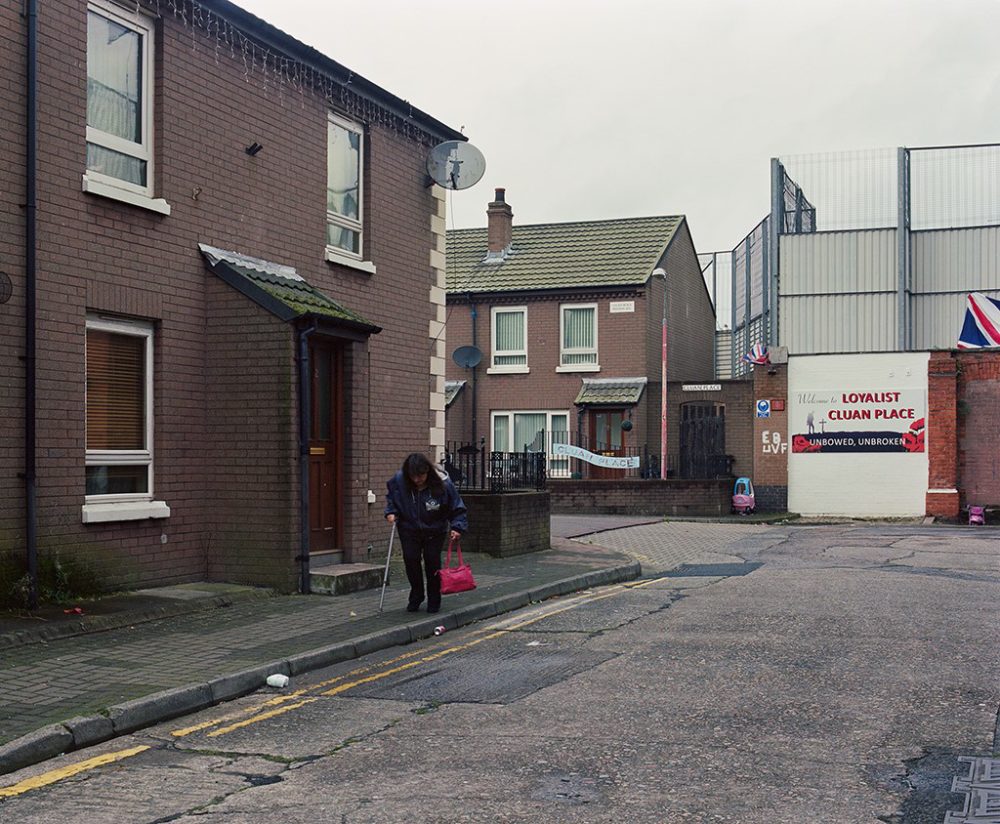
There wasn’t a primary goal for the photographic project – apart from me having to enjoy the whole process for it to work. I knew that it needed to accurately portray the environment and what it’s like living with these structures, either near your home or as part of daily life.
I also knew that I wanted to exhibit the work in Belfast on its completion, for the work to be handed back to the communities that are contained within the photographs. I didn’t want to make it intentionally bleak. Sure, if that’s how the landscape is at that particular scene then I will photograph it, however, if there is social or economic growth or hope within the surrounding landscape then I did my best to capture that.
Finally, the book was a natural progression to the project, and one that will accurately summate the journey. It will allow me write a few words, along with the words of others, but mostly to let the photographs do the talking.
The project is now finished and contains approximately 80 images.
A big thank you from ITO to John!
About John
John is a self taught photographer born and brought up in Northern Ireland. He later moved to central Scotland where he lives with his children and creates much of his work. Since September 2014, John has been solely working on his long term project ‘Partition’. He also displays his work at a variety of exhibitions.
You can contact and view more of John’s work through his website: www.john-irvine.com
Unless otherwise stated, all images in this article are © John Irvine

